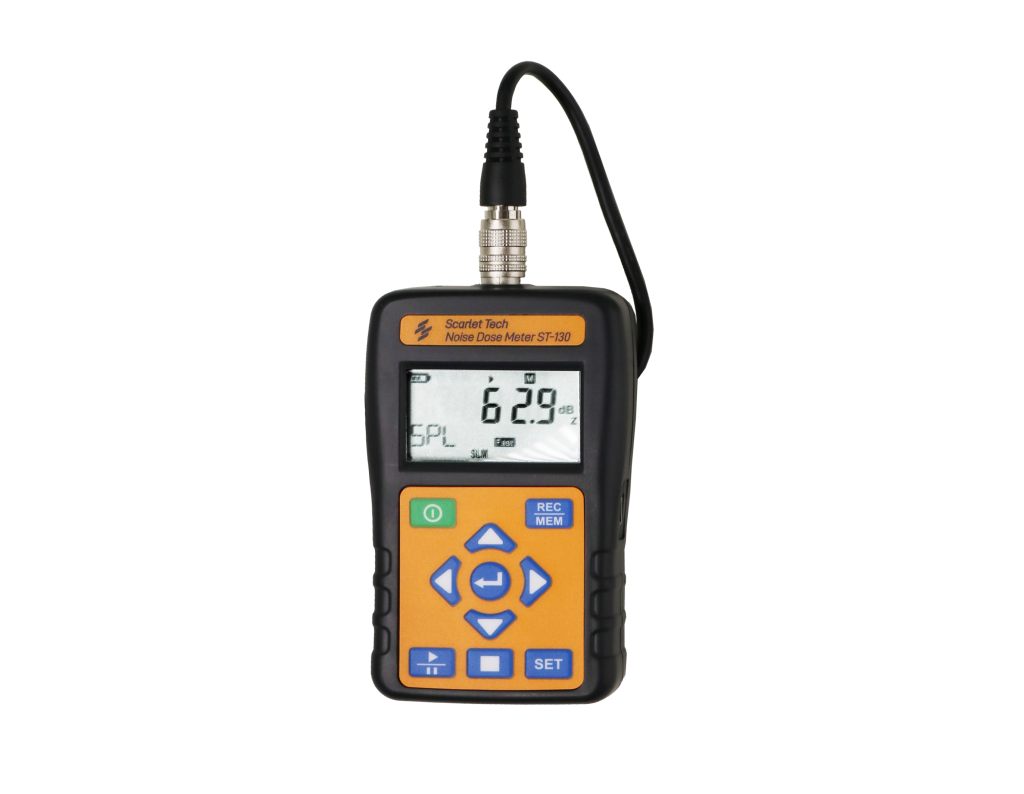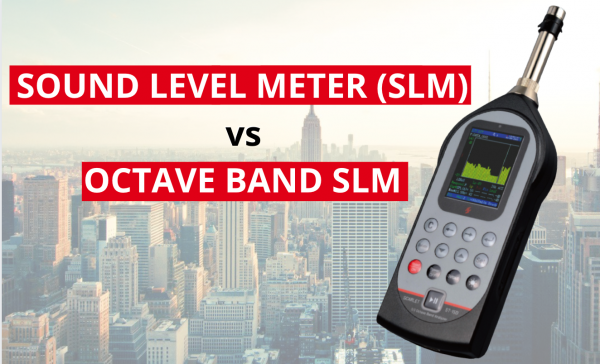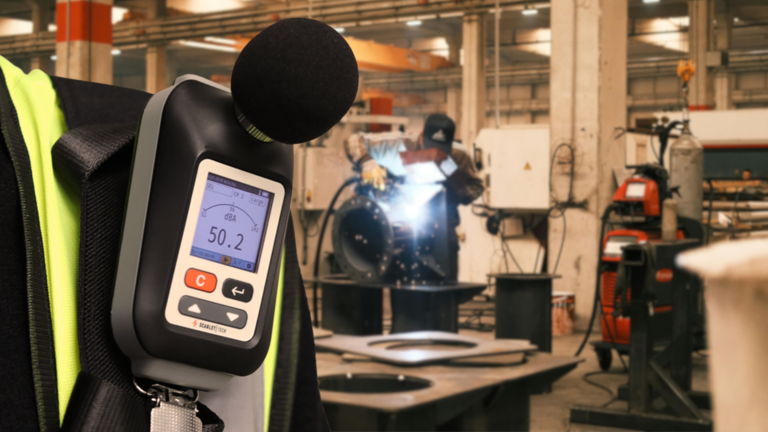We got asked a lot recently from our clients whether they should get a sound level meter or the one with octave band filters. In this article, we will explain how sound level meters and octave band sound level meters work, so you can understand better and finally decide which one you should get.
Sound Level Meter
The way sound level meters (SLM) take measurements without octave band filters is through time weighting and frequency weighting as specified by the international standards such as IEC 61672-1. Time weighting defines how the SLM reacts to changes in sound pressure. Time weightings are shown as Fast, Slow and Impulse (or ‘F’, ‘S’ and ‘I’). While frequency weighting adjusts how the sound level meter reacts to different sound frequencies. Based on IEC 61672-1 standard, sound level meters must have A-, C- and Z- frequency weightings, other weightings such as B- and D- also exist but are not required and only used occasionally in very specific applications.
The A-weighting is the most common and widely used frequency weighting as it resembles the human ear’s response to noise frequencies at medium-range levels, less sensitive to noise at the lower and higher frequencies. Thus, it is useful for describing how noises affect people’s hearing. Therefore, the A-weighting is acknowledged internationally and required for environmental and occupational noise measurements.
You can use sound level meters like Scarlet Class 1 ST-11D with to measure occupational noise accurately.
Octave Band Sound Level Meter
As its name implies, the octave band sound level meter has octave band filters. Octave band filter is used to split noise spectrum into thinner frequency bands which then allows you to do frequency analysis. Octave band frequency analysis are typically shown directly as a list of data and or a bar chart, serving as a great visual noise inspection tool.
The frequency bands usually either have a bandwidth of one octave or one-third octave. An octave has a frequency range where the highest frequency is 2 times the lowest frequency. While a one-third octave is a range of frequency bands where the highest frequency is 1.26 times the lowest. The main difference between the two bands is that, in one-third octave each of the 10 octave bands is split again into three, providing a more detailed description of the noise content frequency.
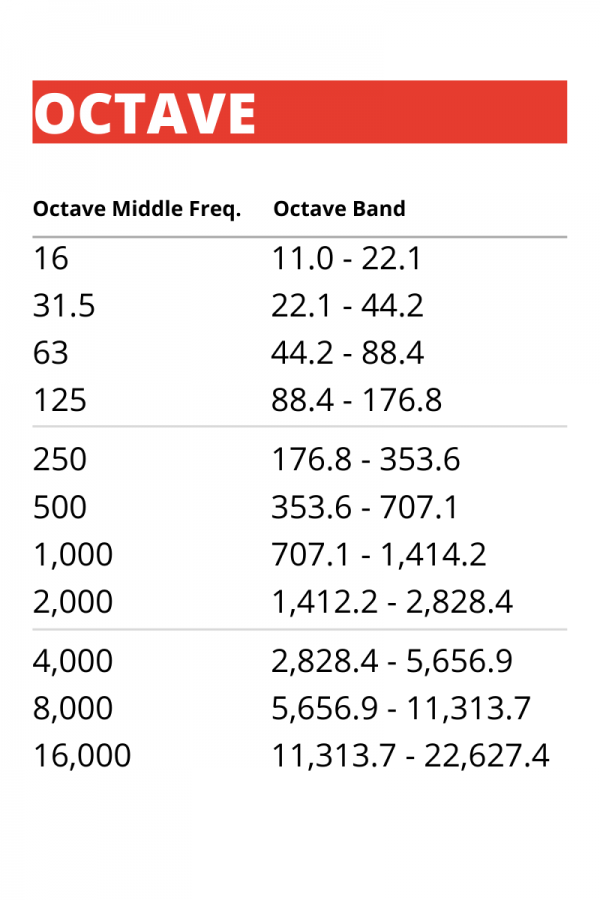
Octave band sound level meters such as Scarlet ST-12D Sound Analyzer complies with the most up-to-date IEC international certifications. It automatically does a real-time frequency band analysis for you. You can also monitor real-time noise data and export historical noise data on your computer using Scarlet Sound software. Moreover, you can also request for additional functionality such as an integrated GPS system to help you locate noise sources.
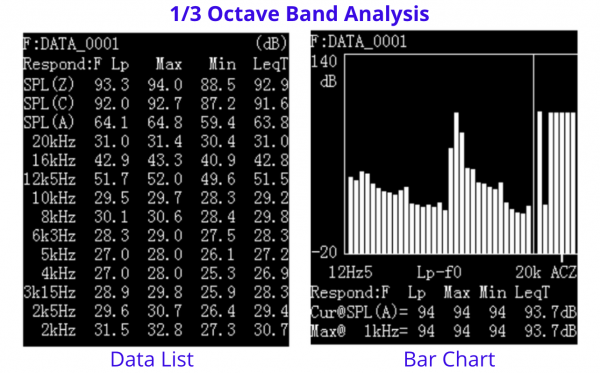
Does Octave Band Affect Sound Level Meter Accuracy?
The answer is no. Octave bands have very little to do with how accurately a sound level meter works. Your sound level meter is, in fact, has to be accurate with or without octave bands. What octave bands actually do is to split noise into smaller frequency bands which will help you to identify the noise source.
Conclusion
When it comes to deciding between sound level meter or octave band sound level meter, it all depends on your needs and applications. If you only need to measure sound levels that show equivalent continuous sound level and sound level exposure, then a sound level meter is enough for you. However, if more detailed information about a complex sound is required, using octave band sound level meters would be more appropriate.

Scarlet Class 1 Sound Level Meters
Class 1 Sound Level Meter ST-11D
ST-11D Features
- Class 1 Complies with IEC-61672-2013
- 10 Hz-20k Hz frequency range
- 27 dB-140 dB measurement range
- Data logging & record function
- Measures and displays Leq value
- Long term measurement
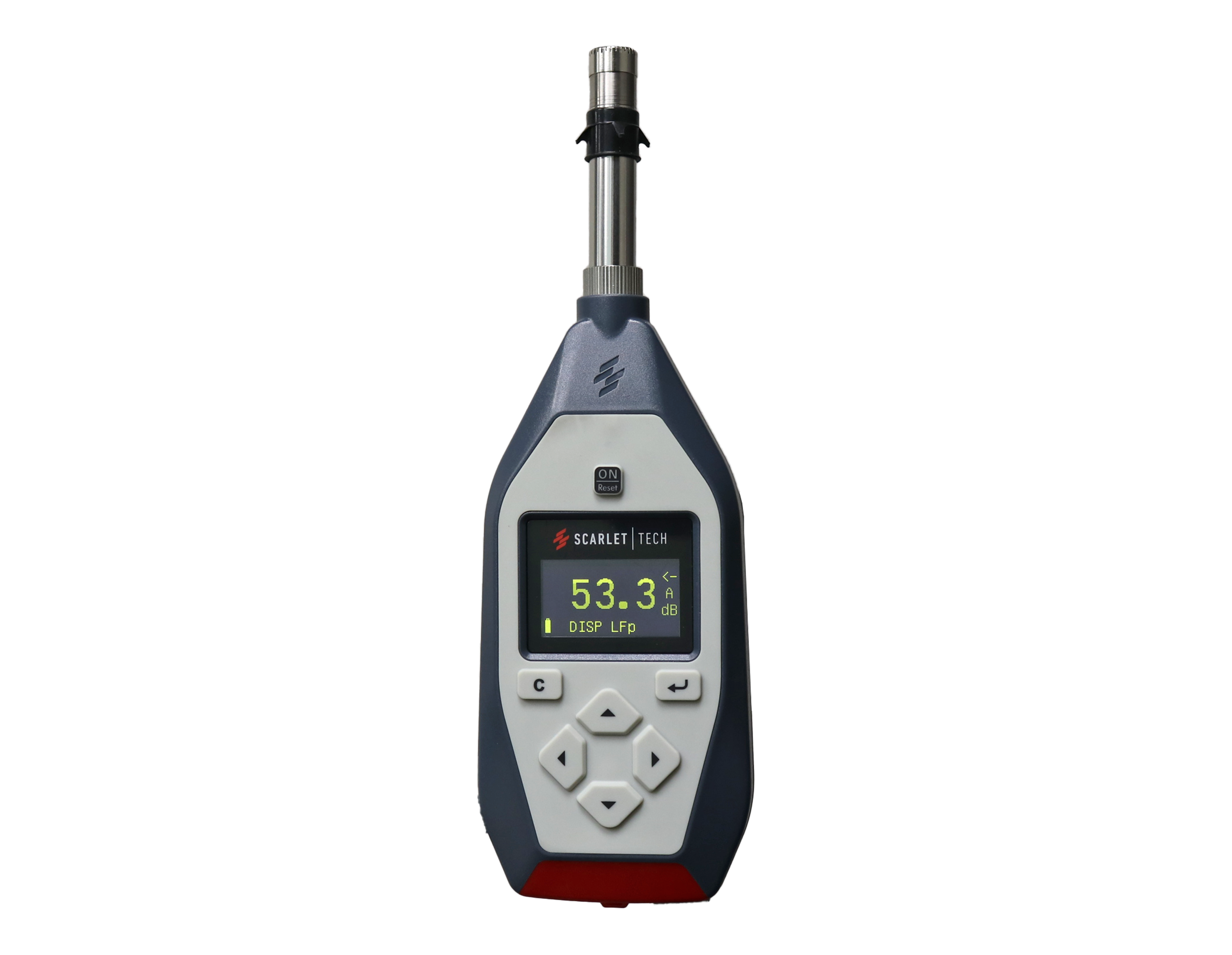
Class 1 Sound Level Meter ST-12D
ST-12D Features
- Class 1 precision in 25-140 dB range
- Measures Leq value with adjustable weightings
- Accurate frequency analysis with octave band filters
- Noise recording to .wav or .mp3

Noise Dosimeter ST-130
ST-130 Features
- Perform OSHA and IEC noise accumulation surveys
- 6 built-in standard dose measurement setups: OSHA/ MSHA/DOD/ACGIH/ISO85/ISO90
- Data logger up to 10,00,000 readings
- Adjustable criterion level, exchange rate & threshold
- Sampling times between 1 sec to 2 hr
- Stores up to 10,000 dose meter survey results
- Dose Meter Mode: record time stamp, %Dose, TWA8, LEP, 8h, Leq, SEL, LN%, SPLmax, SPLmin, PeakMAX
- Sound Level Meter mode: Leq, PeakMAX & SEL
- USB interface. Support Windows XP / Vista / 7 / 8
